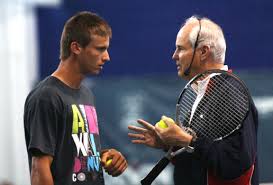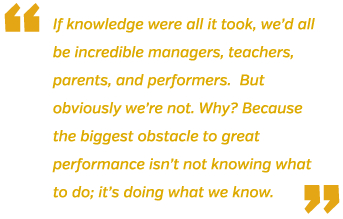Most of us hear the word "coach" and we immediately picture it having to do with the sports/athletic  world. I was curious where the word actually originated and how the current definition has evolved.
world. I was curious where the word actually originated and how the current definition has evolved.
According to Wikipedia the: "English term “coach” is derived from a medium of transport that traces its origins to the Hungarian word kocsi meaning “carriage” that was named after the village where it was first made. The first use of the term coaching to mean an instructor or trainer arose around 1830 in Oxford University slang for a tutor who "carries" a student through an exam. Coaching thus has been used in language to describe the process used to transport people from where they are, to where they want to be. The first use of the term in relation to sports came in 1861."
Even though the term coaching was introduced in sports in the late 1800's, it remained primarily a student-teacher relationship based on skills assessments. This type of orientation did not transfer well to the growing need of 20th century organizations and corporations to improve morale and retention among their employees.
In the mid-1970's Timothy Gallwey introduced a new concept of coaching he named the Inner Game that revolutionized the standards and techniques for coaching, especially as it pertained to the workplace.
Gallwey has shared the Inner Games tenets for over three decades with clients such as Apple, AT&T, Coca Cola and others. He has set a new methodology for coaching and the development for personal and professional excellence in a variety of fields.
His epiphany came when he was captain of his tennis team at Harvard University. He observed that just telling or showing a student how to correct a particular behavior might be immediately duplicated successfully, but there was rarely a long term correction. The following reference from Wikipedia provides an example:
"This is often illustrated by the example of a player who does not keep his or her eye on the ball. Most coaches would give instructions such as: ‘Keep your eye on the ball’ to try to correct this. The problem with this sort of instruction is that a player will be able to follow it for a short while but be unable to keep it in the front of his or her mind in the long term. This means that progress was slow. The result was that coaches and players grew increasingly frustrated at the slowness of progress but no one had a better system of coaching. So one day, instead of giving an instruction, Gallwey asked the player to say `bounce' out loud when the ball bounced and `hit' out loud when they hit it. The result was that the players started to improve without a lot of effort because they were keeping their eye on the ball. But because of the way the instruction was given they did not have a voice in their heads saying ‘I must keep my eye on the ball.’ They were simply playing a simple game while they were playing tennis. Once Gallwey saw how play could be improved in this way he stopped giving instructions and started asking questions that would help the player discover for himself what worked and what needed to change. This was the birth of the Inner Game."
The Inner Game is defined quite well by this quote from Timothy Gallwey taken from Performance Consultants International:
“There is always an inner game being played in your mind no matter what outer game you are playing. How aware you are of this game can make the difference between success and failure in the outer game.” Tim Gallwey, creator of The Inner Game.
One of Gallwey's early followers was Alan Fine. Fine was impressed with the Inner Game theory and worked with two other partners to develop it into a more global concept for leadership and goals achievement for all levels of individuals. My next blog will continue with our coaching theme and we will learn more about Alan Fine and his firm InsideOut Development.
The following quote is from Fine's web page and gives you some initial insight into what we will "talk" about next week.
Join the WorkPuzzle Discussion at the Tidemark Online Community (TMOC)
Engage in the WorkPuzzle discussion by joining the TMOC private social network. Commenting on a public blog like WorkPuzzle can be a little intimidating, so why not join the discussion inside the privacy of the TMOC discussion group?
By joining TMOC, you'll get to see who else is in the group and your comments will only be seen by those whom you trust. Joining TMOC is quick, easy, and free (no kidding…this takes less than 2 minutes). To get started, click here.
Already of a member of TMOC? If so, join the WorkPuzzle Dialog Group by clicking on the WorkPuzzle Group icon on the left side of your TMOC homepage. Questions? Email the WorkPuzzle editor (workpuzzle@hiringcenter.net) and we'll walk through the process.
 Editor's Note: This article was written by Dr. David Mashburn. Dave is a Clinical and Consulting Psychologist, a Partner at Tidemark, Inc. and a regular contributor to WorkPuzzle.
Editor's Note: This article was written by Dr. David Mashburn. Dave is a Clinical and Consulting Psychologist, a Partner at Tidemark, Inc. and a regular contributor to WorkPuzzle.


